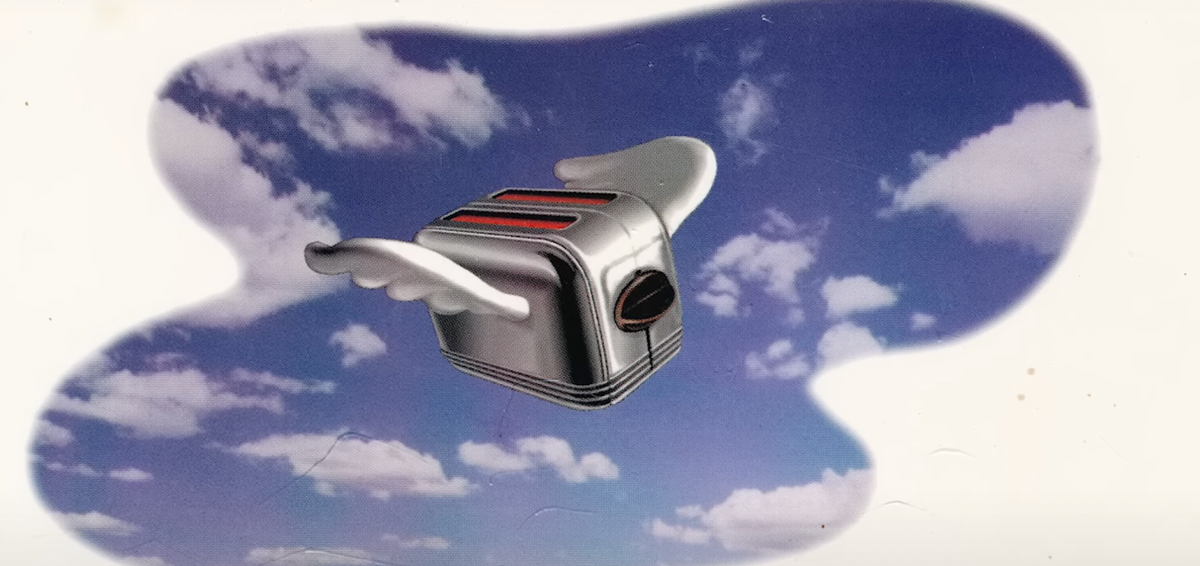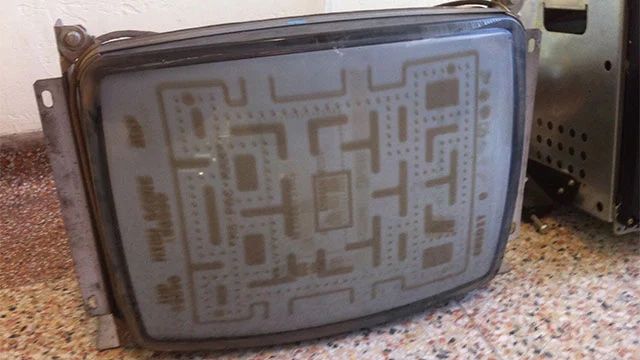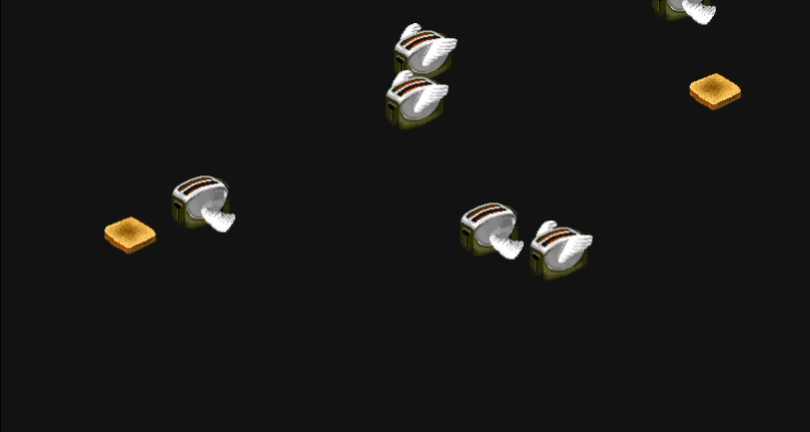Foundations: Screensavers

Burn-In, Drop Out
Back in the olden days, computer monitors and televisions were made using Cathode Ray Tubes (CRTs). If a particular static image–like a user interface–was left on the screen long enough (we're talking months-to-years), the phosphor on the inside of the monitor would permanently change and leave a kind of darkened, ghost image.

This is much less of an issue with LCD technology, but it can still happen in modern OLED screens. And of course, CRTs are still floating around. I used a gas station pump last year with a 5" CRT that had significant burn-in.
So, how do you prevent burn-in? You just need to move the pixels around. And what better way to move the pixels around than with a fun little animation?
Screensavers
Screensavers, while still around today (my Roku has a very nice fish tank screensaver), really reached their apogee in the early 90s. At first, these quirky generative animations didn't come with your computer; they were extra paid software and people went nuts for them. Myself, included.
Chief among this wave of software was After Dark, largely known for its iconic flying toasters screensaver. After Dark came out for both Windows and Mac, had a whole slew of different screensavers, and lots of dials and toggles to customize their display. It was such a phenomenon that add-ons with licensed characters from Disney and The Simpsons were sold. It was a very weird part of computing & animation culture that was happening from say, 1992-1995. For that very brief window of time, "screensaver developer" was a job that people had.

If you want to play with this bit of computing history, Archive.org has a collection of screensaver software (including various versions of After Dark) that you can run directly in your browser.
Beyond Burn-In
Okay, so why was I so drawn to screensavers? Well, at that time, I was very into computers in general. There is a moment in 1993's Jurassic Park where Lex sits down at a Silicon Graphics terminal amidst a raptor attack and exclaims, "This is a Unix system. I know this!" It was simultaneously cringe and validating for me because shit, I was that kid. (It was technically an IRIX system, but now I'm just proving my point.)
But screensavers were these weird little programs. They were unlike pretty much any software I had seen (I had yet to discover the demoscene, which is a topic for another post). They were visual like a game, but explicitly not interactive. It was paradoxical computing: the second you interacted with it, it went away.
I favored screensavers that were highly configurable. Adding your own photos as a slideshow was one thing, but being able to change colors and specify the amount of particles and the speed at which the animation ran was something else. There was not a lot of consumer-grade animation software in the early 90s, but I could sit and fiddle with these controls for hours and feel like I was pushing it beyond its intended purpose and creating my own motion graphics.
One of the best qualities of screensavers was that they were generative. As opposed to a recorded animation that looped when you stepped away from your desk, screensavers often used randomization and logic in their output. They could evolve over time. They would never be exactly the same thing twice. You could watch a screensaver for a long time and get a very clear sense of its aesthetics, but the content would shift and change. Examining what I like about screensavers and my own artistic practice, it's not hard to see the parallels.
One of the most frustrating parts about screensavers at this time was that there was no clear documentation about how to create them from scratch. And even more frustrating is knowing now that they were just regular programs with a different (.scr) file extension. I remember looking in computing books at bookstores and the library for any kind of clues about how to create them to no avail. There were plenty of books teaching you to make your own games or even make computer art with fractals, but none of the generative goodness of screensavers. They were somehow ubiquitous (they're on every computer!) and a total dark art.
The documentation for creating screensavers is out there and easily accessible now. Unfortunately, a lot of the tools to easily make use of it are outdated at this point.
Screensavers Today
As I mentioned before, screensavers still exist on various devices. Unfortunately, they've lost a lot of their original charm. The Roku fish tank is fantastic, but Netflix's screensaver is just a semi-animated promotional slideshow. Screensavers on ATMs, self-checkout stands, and gas pumps are either promotions or TV ads.
More than anything, I lament that we don't use the ridiculous amount of screens we have these days for ambient generative art. I don't really care if you think that After Dark is corny or unserious. When it was A Thing, many many people got genuinely excited to see a fun evolving animation pop up on their spreadsheet box. We've lost that novelty. People see a screen now and they expect it to be enraging them, hard-selling them, or distracting them. And that's just really unfortunate for me, as a person that makes fun evolving animations.